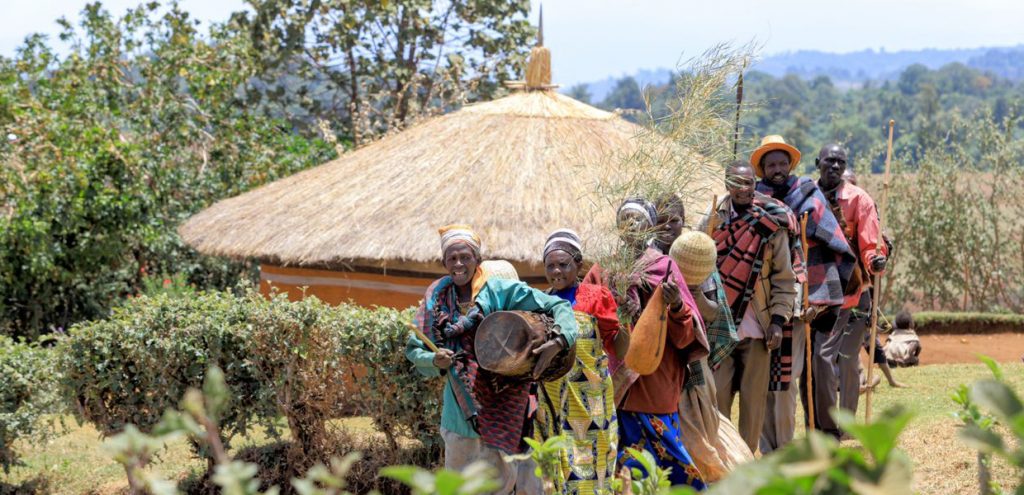Sebei people and their culture consists of three formerly independent but closely interrelated tribes living on the northern and northwestern slopes of Mount Elgon, and on the plains below, in eastern Uganda. The term Sebei has come into use in modern administrative parlance, and the descendants of these three tribes now identify themselves as Sebei. Etymologically, Sebei (varied as Sabei, Sapei, and so on) originates from Sapiñ, the name of one of the tribes. The other two tribes are the Mbai and the Sor.
Sebei is an ethnic group mainly found in Uganda and Kenya. They speak Sebei, a Nilotic language. Many members of this ethnic group occupy three districts of Kapchorwa, Kween and Bukwa found in Eastern Uganda.

Their territory borders the Republic of Kenya which is home to more than five million Kalenjin, a large ethnic group to which the Sebei belongs. The Sebei, now known mainly as Sabiny, speak Kupsabiny, a Kalenjin dialect spoken by other smaller groups of Kalenjin stock around Mount Elgon. The Sebei and these smaller groups inhabiting the hills of Mount Elgon are collectively referred to as the Sabaot.
Sebei People and Neighboring Areas
The Sabiny, like the rest of the Kalenjin, circumcise teenage boys and girls as a rite of passage. Their territory was curtailed by the drawing of the Kenya-Uganda border, for Sapiñ formerly extended into modern Kenya on the eastern side of the mountain and onto the Uasin-Gishu Plateau. In language and culture, the Sebei are closely affiliated to the people on the southern slopes of Mount Elgon National Park. Indeed, modern politics largely severed these close ties, though a good deal of intermarriages and movement between the territories and some psychological identity remain.
This last has been reinforced by modern political leaders, who formed the Sabaot Union (people who use the greeting, supay) as a pressure group. The union includes the three Sebei tribes in Uganda and their sister tribes on the Kenya side of the border, Bok, Kony, and Boηom ( Kipkorir, 1973:71). The research reported in this volume, however, applies only to the three tribes in Uganda who identify themselves as Sebei.
The remaining elements in the formal structuring of Sebei society are the kin-based organizational units, clan and lineage; the kinship terminology and the patterning of interpersonal relationship based on consanguinity and marriage; and the age-set structure. In dealing with each of these subjects, our attention will be directed both to its traditional organization (as it existed at the time of first European contact) and to its present operation, examining the structural elements, the functional use, and the psychological involvements of these institutions.
Clan and Lineage of Sebei People
Each Sebei belongs to a clan (aret, arosyek, pl.), a patrilineal, strictly exogamous, named social entity. Memberships is the most important affiliation in a man’s life; it is the first thing a person wants to know about a stranger. A man cannot change clan affiliation, except when clans split apart. Clans have a strong spiritual hold on their members and are even seen as having a kind of genetic inheritance of traits.
There are some two hundred separate clans among the Sebei, though a definitive list cannot be made. Each clan is composed of the descendants of a single founder, and usually its name is formed by prefixing the syllable kap (descendants of) to the founder’s name. Some, however, have names derived from mythic accounts or some habit or practice attributed to the founder.
The Ritual Transformation from Child to Adult
The ceremonial activities (meriket) that mark the transition of Sebei boys and girls into adult status are the most important and dramatic events of Sebei life today and probably have always been so. The ceremonial cycle may take one to six months to complete.
Boys generally undergo the initiation at eighteen to twenty years; girls a couple of years younger. There are two major and several minor elements in the cycle: the first has as its central feature the circumcision of the boys and a counterpart operation, involving the severing of the whole labia minora, for the girls. This is also locally called circumcision, although it should perhaps be called ‘labio dectomy’, for it is not merely a clitoridectomy. There few minor ceremonies of shaving, painting, and partial release from seclusion tabus.
The cycle culminates with the second major ritual events, allocating the initiates to their appropriate age-sets and signalizing their reentry into the normal activities of society.
Besides the Sebei – Sabiny people, Uganda is a rich multi-cultural country, so don’t miss out on experiences with the nearby Bagisu or Bamasaba people, Iteso People and further northeast, the famous Karamojong group or Ike community. Get mesmerized by the Batwa trail in both Bwindi Impenetrable National Park and Mgahinga Gorilla National Park. While in Bwindi, you can also also opt for the breathtaking gorilla trekking experience.
